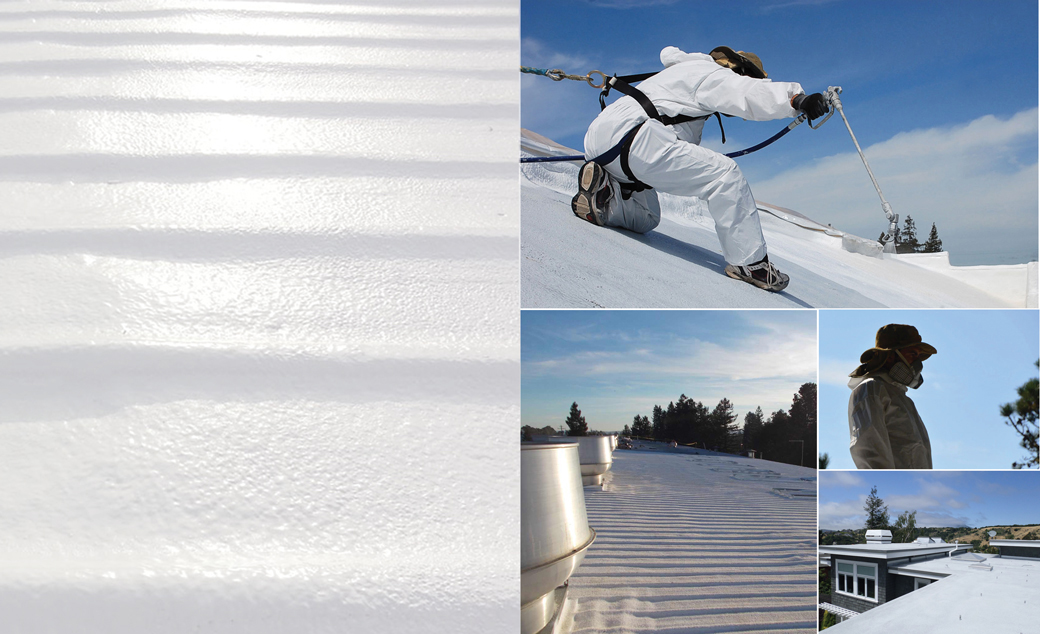Regarded for its architectural structures, Buffalo, N.Y., has many buildings and landscapes designed by Louis Sullivan, Fredrick Law Olmsted and Frank Lloyd Wright. Included as a defining structure on the downtown skyline is James Knox Taylor's 5 1/2-story pink granite building originally designed for federal offices.
Constructed in 1901, the Gothic-style building is defined by recessed arches, projecting gargoyles and eagles, and a 244-foot-tall signature Flemish Gothic tower. Locally referred to as the "old post office," the building originally housed a post office and other federal offices, including two federal district courtrooms and the Department of the Interior.
In 1971, the building was placed on the National Register of Historic Places. Soon thereafter, the building began to deteriorate and faced the prospect of demolition. In 1980, a plan to reuse the building to house Erie Community College's city campus saved the building from a wrecking ball. However, the budget to preserve the entire building proved inadequate, so measures were taken in 1982 to preserve sections until sufficient funding was available. Among the short-term solutions, an asphalt shingle roof system replaced the original clay tiles as a compromise until proper reconstruction could be conducted at a later date.
In the late 1990s, Buffalo-based architectural firm Flynn Battaglia Architects PC performed a campus evaluation that served as a template for restoration design work. When financed for bidding in 2010, the scope of work included restoring 400 windows, broad granite façade repairs and an extensive multiphase roof system restoration project.
Chosen for its experience with sophisticated reroofing projects, Grove Roofing Services Inc., Buffalo, began its work on Erie Community College's multiple roof systems in July 2011.
Challenges
The multiphase roof system restoration project included 29,500 square feet of clay tiles at steep-gable roof exteriors (resembling a mansard from the street level) to match the original roof system; 12,000 square feet of asphalt shingles on the mansard's lee side (an area obscured from public view); a 16,000-square-foot polymer-modified bitumen roof system adhered to four entry pavilions, a low-slope roof area between the steep-slope roof's perimeter and a large atrium skylight over the building's center; and ornate copper flashings with 15-foot-tall copper finials.
The workmanship for such a project was difficult enough in its own right, but several other factors made the project more challenging. Originally targeted for an early spring start, procedural delays pushed construction to early July 2011, inevitably coinciding with the beginning of the college's fall semester.
Because the building is built close to the sidewalk in the middle of downtown, shutting down entrances and/or redirecting foot traffic to the other side of the street was not an option. An adjacent fire station and Coca-Cola Field, one of the largest parks in Minor League Baseball, exacerbated the problem. Fencing, covered scaffolding, caution tape and signs were put in place to keep the area safe.
"Although fencing and covered scaffolding were used to protect the public, curious passersby often would ignore signs and other precautions, so we had to continually be on top of the situation to keep everyone safe," says Chris Gannon, Grove Roofing Services' vice president of operations. "Additionally, with the overhead construction, deliveries and frequent hoisting and lowering of debris and materials, attentiveness and extreme caution were exercised at all times, and everyone who worked on the project deserves credit for achieving an incident-free project."
The looming prospect of winter also was a concern from the beginning. Although it was reasonable to believe snow would hold off until December, the project's proximity to Lake Erie was a concern.
"The work area was 100 feet high in the air and a few blocks from the lake, which meant workers would be feeling the brunt of the strong lake winds, so the goal was completing the most weather-susceptible west side as quickly as possible," Gannon says.
Given the nature of the work that required exact workmanship and skill, a small-sized specialty contractor, Century Architectural Sheet Metal LLC, Buffalo, was hired as a subcontractor to help accelerate the perimeter tile and copper work. Working with the subcontractor, crews were able to complete all but one exterior corner before severe weather brought construction to a halt.
Clay tiles
In terms of difficulty with the construction itself, installing the new clay tiles posed the project's biggest challenge. The ornate façade includes an intertwining of three gables, a central tower, four turrets, eight mansards and 32 dormers. Crews typically would progress a mere 8 feet of straight-run installation before the next hip, valley or sidewall was encountered.
The steepness added another dimension—the mansards, dormers and turrets were a near-vertical 22:12 slope.
"The steepness of the project made it extremely challenging," says Rich Foley, sheet metal superintendent for Grove Roofing Services. "It was as though we were working straight up and down."
Although a built-in gutter and granite ledge provided a modest work surface, full scaffolding was the only reasonable means of staging the work.
When this roof area was repaired in 1982, the existing Ludowici mottled-green clay tiles were removed and replaced with a three-tab asphalt shingle roof system. This required plywood to be installed directly onto the existing clay tile deck. A continuous, organic felt base sheet installed below the tile had disintegrated into a fine, black dust that covered workers head to toe after every tear-off maneuver.
"It was the worst tear-off I've ever experienced," says George Guthrie, Grove Roofing Services' assistant foreman and intermittent project lead foreman. "It was an unbelievable mess with all those years of dirt."
Stripping the shingles from a 30-foot ridge-to-eave run was a daunting task. The crew devised a method of using circular saws to cut through the shingles and plywood deck in 2-foot strips to fit in the scaffolding-mounted debris chute. Although the heavy usage reduced a circular saw's life span to only one week, the labor savings more than paid for the extra equipment costs.
Once the building was temporarily weathertight with Carlisle® WIP 100 self-adhering underlayment, the crew installed 2-inch by 4-foot vertical wooden battens and 1-inch by 4-foot horizontal wooden battens required to properly support and ventilate the new clay tiles. An existing steel-framed rafter and truss structure supports the original hollow clay-tile deck substrate, requiring pre-drilling with a specialized Hilti Kwik-Con II Concrete and Masonry Fastening System to achieve proper anchorage.
Ludowici Spanish-barrel clay tiles were specified, and though the style is identical to the building's original tiles, for economic reasons extrusion production was chosen over casting. The original mottled-green finish no longer was available, so a dark green option was selected because the original mottled tiles contained dark green flecks, and the interim asphalt shingles also were dark green.
Asphalt shingles
Less formidable in slope, the mansard's backside is a 10:12 sloped asphalt shingle roof system. This work was much easier given the shorter 17-foot run that terminated with a low-slope surface used as work space, as well as working on the building's lee side, protecting workers from the strong winds. Hidden from public view, a more cost-effective assembly of Carlisle WIP 100 self-adhering underlayment, 2-inch by 4-foot vertical wooden battens, 3/4-inch-thick plywood and a second layer of Carlisle WIP 100 self-adhering underlayment was applied on the deck. A final layer of Owens Corning™ TruDefinition® Duration® architectural asphalt shingles completed the roof system.
Polymer-modified bitumen
The final reroofing phase was the polymer-modified bitumen roof system. A major element of the 1982 work was replacing a 60- by 144-foot atrium courtyard skylight. The low-slope roof area between the skylight and the steep-slope roof is a labyrinth of ventilation towers; elevator penthouses; and equipment curbs, supports and vents. Circumnavigating the roof from one end to another was a challenging feat with the roof width narrowing to 2 feet in many locations.
For this area, the roof system consisted of a sheet of Tremco® BURmastic® Composite Ply, a Hunter H-Shield 3-inch-thick polyisocyanurate insulation panel, 1/2-inch-thick wooden fiberboard, two plies of Tremco BURmastic Composite Ply Premium and one ply of Tremco POWERply® Standard Plus FR cap adhered to the concrete slab deck and flashed with Tremco Hypalon® Elastomeric Sheeting and Tremco One Coat Aluminum roof coating.
The crowning elements
All the roof systems were merged by installing unique copper flashings. The numerous elevation changes necessitated labor-intensive soldering of copper valleys, dormer cheek walls, built-in gutters and parapet headwalls. Expert craftsmanship was required for the reproduction of the sweeping ridge caps. With a stretch of 6 feet and nine separate composition pieces, sections were shop-fabricated to the greatest extent possible. Accented with a continuous row of 3-inch-wide decorative copper sphered 4 inches on center, more than 6,000 pieces were used throughout the project.
During its 100-year history, the building's distinguishing four-corner turrets had been lost. Originally, each of the four turrets was capped with ornate 15-foot-tall copper finials. Over time, the finials were lost to wind or lightning and were replaced by nondescript copper pyramid caps.
After discovering one original finial in the attic, the team was committed to bringing these defining building elements back to life, and a reproduction was designed. The original was shipped to fabricator Kaufmann Ulm Lichtwerbung in Germany as a model where more than 150 pieces for each finial were soldered and welded. Crews used a 150-foot-tall articulating man-lift with a 25-ton crane to set the finials and bases in place.
"Working out of a 150-foot lift and preparing the turrets for the finials was extremely challenging," says Jim Carpino, lead field sheet metal foreman for Grove Roofing Services. "The process was unique and complicated, and everything had to come together."
A celebratory end
After overcoming challenges for two years, Grove Roofing Services completed its work in July 2013. For its exceptional workmanship on Erie Community College, Grove Roofing Services received a Gold Circle Awards honorable mention in the Innovative Solutions: Reroofing category and a Preservation Award from Preservation Buffalo Niagara that was presented during a ceremony to commemorate the project's overwhelming success.
"The most rewarding part was the topping-off ceremony," Gannon says. "The school's president, media outlets and Preservation Buffalo Niagara were all in attendance to celebrate the completion of the project."
Thanks to Grove Roofing Services, an important part of the continued renaissance of downtown Buffalo has been preserved and the building will continue to be a beautiful focal point for decades to come.
Chrystine Elle Hanus is Professional Roofing's associate editor and NRCA's director of communications.
Project name: Erie Community College
Project location: Buffalo, N.Y.
Project duration: July 2011-July 2013
Roof system types: Asphalt; clay tile; polymer-modified bitumen
Roofing contractor: Grove Roofing Services Inc., Buffalo, N.Y.
Product manufacturers: Carlisle® WIP Products, Carlisle, Pa; Hunter Panels, Portland, Maine;
Ludowici Roof Tile,™ New Lexington, Ohio; Owens Corning,™ Toledo, Ohio; Tremco® Inc.,
Cleveland
Gold Circle Awards category: Innovative Solutions: Reroofing



